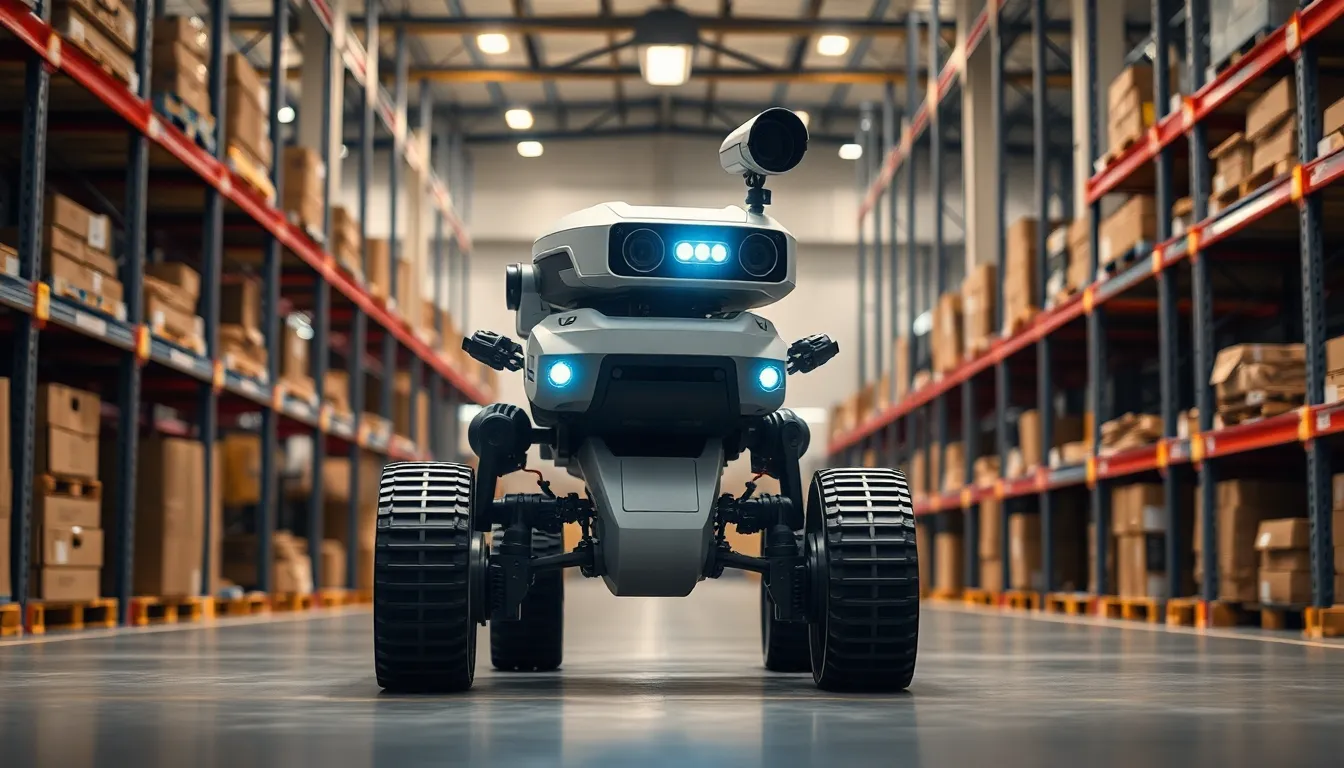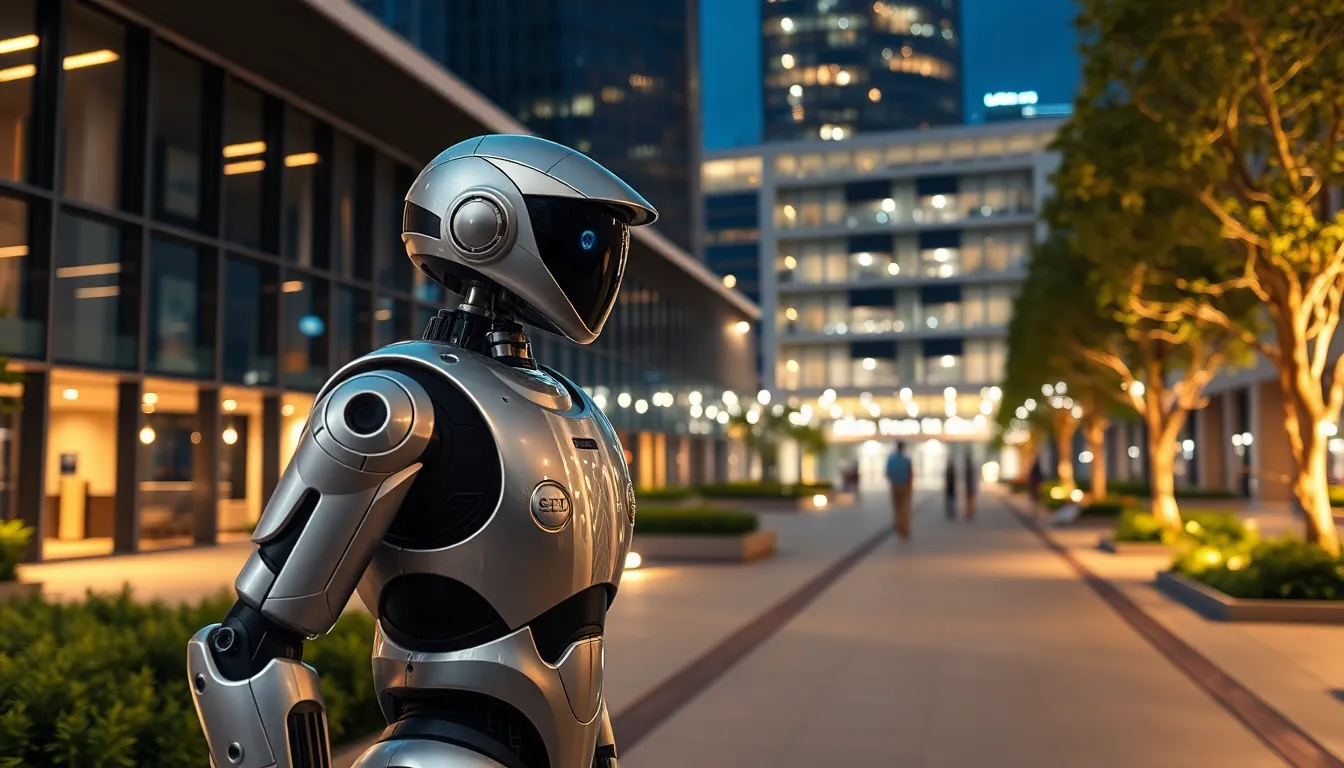In a world where security is no laughing matter, robotic security systems are stepping up to the plate like a superhero in a spandex suit. Forget the days of boring old security guards sipping coffee while dozing off; these high-tech sentinels are here to patrol your premises with the precision of a hawk and the stamina of a caffeinated squirrel.
Table of Contents
ToggleOverview of Robotic Security Systems
Robotic security systems represent a significant advancement in security technology. Designed with precision, these systems patrol areas with consistency, offering enhanced surveillance compared to traditional guards. Integration of sensors and cameras allows them to detect unusual activities or intrusions in real-time, making them highly effective.
Innovations in artificial intelligence contribute to their efficiency. They analyze large amounts of data rapidly, identifying patterns that may indicate security threats. Furthermore, robotic systems can operate continuously without fatigue, ensuring round-the-clock protection for various environments.
Automated responses enhance their functionality. Upon detecting a security breach, robotic systems can alert authorities or activate alarms instantly, minimizing response time. Examples of such applications include shopping centers, warehouses, and corporate facilities where constant monitoring is essential.
Cost-effectiveness factors into their growing popularity. While initial investments may be higher than conventional security services, long-term savings arise from reduced staffing needs and operational costs. Many organizations find robotic security solutions to be a more sustainable option as technology advances.
Scalability also plays a role in their adoption. Organizations can easily expand their robotic fleet to cover larger areas or adapt to different security needs. This flexibility ensures that they meet the unique requirements of diverse environments without compromising efficiency.
Ultimately, robotic security systems redefine modern security measures, providing reliable, efficient, and proactive protection across numerous sectors.
Key Features of Robotic Security Systems

Robotic security systems incorporate advanced technology that enhances surveillance and protection. These systems offer numerous key features that improve security effectiveness across various environments.
Surveillance Capabilities
Robotic security systems use high-definition cameras equipped with night vision and thermal imaging. Enhanced imaging allows these systems to monitor vast areas without blind spots. Integrated sensors analyze real-time data, identifying potential threats swiftly. Continuous surveillance ensures no unusual activity goes undetected. Some models even utilize facial recognition technology for additional security layers. Alerts triggered by detected anomalies facilitate a rapid response.
Intrusion Detection
Robotic systems excel in intrusion detection with their suite of sophisticated sensors. Motion detectors and advanced analytics identify unauthorized access instantly. In the event of a breach, automated alerts notify security personnel of potential threats. They maintain a vigilant, constant watch over designated areas, surpassing human capabilities. Real-time monitoring means organizations can respond more effectively to security incidents. Historical data tracking provides valuable insights into activity patterns, enhancing future security strategies.
Accessibility and Mobility
Robotic security systems are designed for mobility, enabling them to patrol various terrains. With all-terrain capabilities, they navigate smoothly through different environments, from parks to warehouses. Their compact size ensures access to restricted areas where traditional security may struggle. Built-in navigation systems allow for automatic pathfinding and obstacle avoidance in real-time. Such flexibility enables organizations to adapt their security measures based on specific needs and situations. Proactive patrols contribute to a safer atmosphere, deterring potential threats effectively.
Benefits of Implementing Robotic Security Systems
Robotic security systems offer numerous advantages, enhancing overall safety and operational efficiency. Organizations experience significant benefits through cost-effectiveness and enhanced security measures.
Cost-Effectiveness
Long-term savings emerge from reduced staffing requirements. Organizations can deploy fewer personnel due to the capability of robotic security systems to run continuously. This leads to lower operational costs, as robots do not require salaries, benefits, or breaks. Furthermore, robotic systems often outperform human guards in terms of surveillance coverage and response times. Deployment within various industries, such as retail and warehouses, further showcases their economic advantages. In many cases, firms notice a substantial decrease in overall security spending while maintaining effective protection.
Enhanced Security Measures
Robotic security systems improve overall security by incorporating advanced surveillance technologies. High-definition cameras monitor areas effectively, reducing blind spots significantly. Integrated sensors enable real-time threat detection, alerting security personnel instantly. Enhanced capabilities like night vision and thermal imaging allow for surveillance in all lighting conditions. Mobility also plays a crucial role; robotic sentinels can access areas that traditional guards might find challenging. Their ability to analyze data rapidly means potential threats are identified and addressed quickly, creating a more secure environment overall.
Challenges and Limitations
Robotic security systems face several challenges that can impact their effectiveness. Addressing these issues ensures that they provide optimal security solutions.
Technical Hurdles
Technical obstacles can limit the functionality of robotic security systems. Connectivity issues may disrupt communication with central control units, affecting real-time data analysis. Software vulnerabilities expose robotic systems to cyber threats, compromising their security capabilities. Additionally, hardware malfunctions can lead to unexpected failures during critical situations. Maintenance requirements often arise with complex systems, consuming time and resources that organizations may lack. Moreover, environmental factors like extreme weather can hinder operational performance. Addressing these challenges requires ongoing investment in technology and training.
Public Perception and Acceptance
Public perception plays a significant role in the adoption of robotic security systems. Concerns regarding privacy often arise, as people worry about constant monitoring. Trust in technology also influences acceptance rates; some individuals remain skeptical about robotic capabilities. Misunderstandings about the role of these systems can create fear rather than assurance. Education campaigns aimed at informing the public about benefits and safeguards can alleviate concerns. Organizations must engage communities to foster a positive reputation for robotic security solutions. Building strong relationships with potential users can enhance acceptance and encourage wider implementation.
Robotic security systems are transforming the landscape of security management. With their ability to operate tirelessly and analyze data in real-time, they offer unparalleled surveillance and response capabilities. These systems not only enhance safety but also provide significant cost savings for organizations.
As technology continues to advance, the potential for robotic security solutions will only grow. Addressing challenges such as public perception and technical limitations will be essential for wider adoption. Embracing these innovations can lead to a more secure environment for businesses and communities alike.





